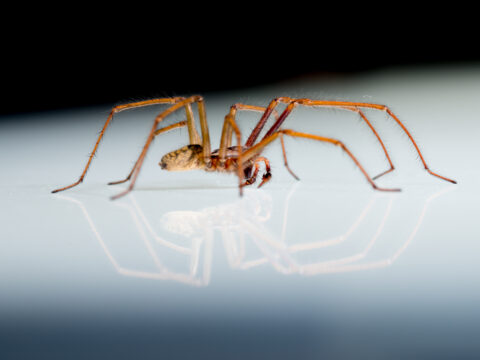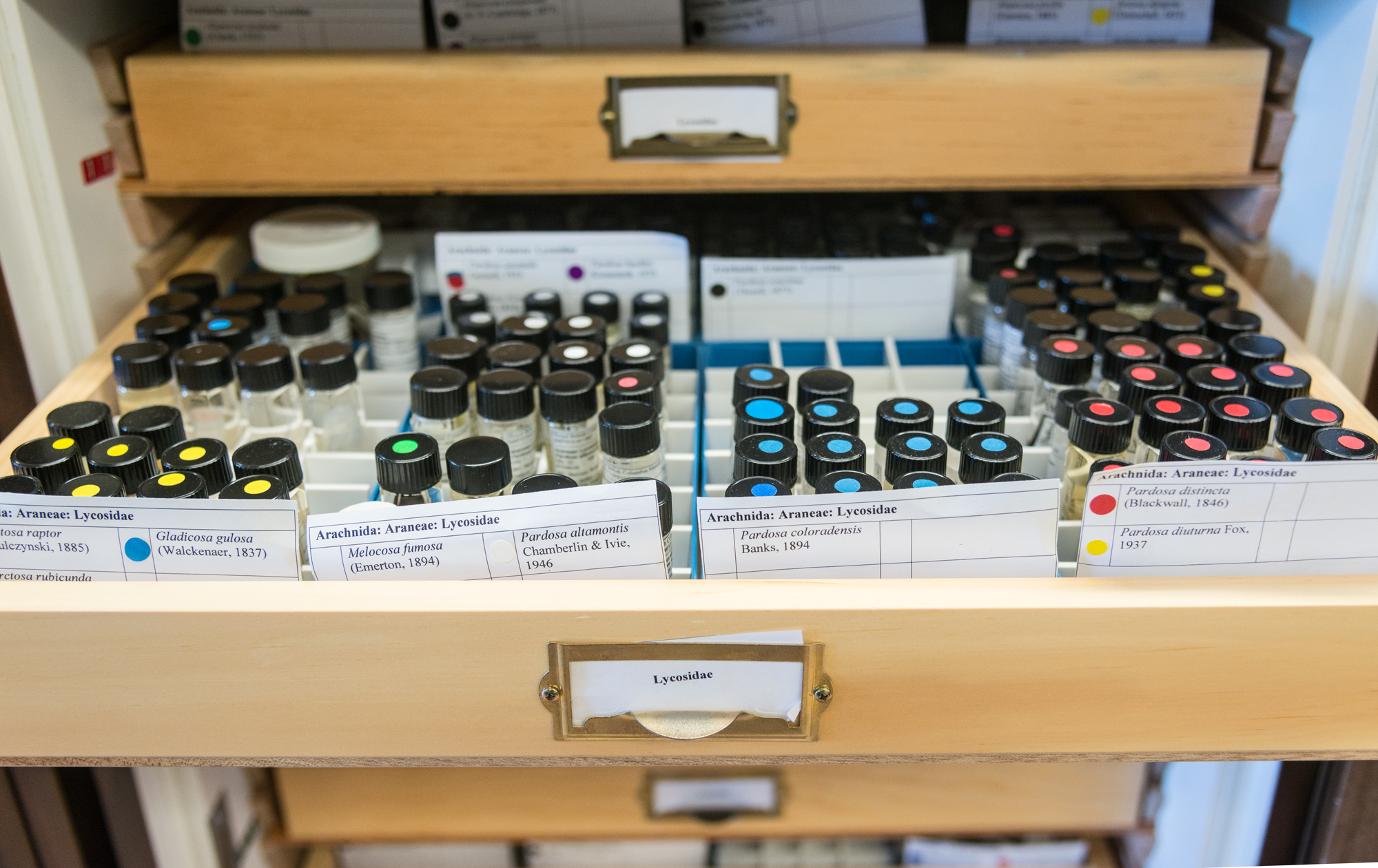Not So Scary
What can you learn about spiders from the Royal BC Museum?
Have you ever accidentally swallowed a bug? Not nice for you. Less so for the bug. Imagine intentionally trying to suck a spider up near your mouth. That’s what spider scientists do when collecting spiders. Sort of. They often use a tool called an aspirator, which is a small tube that works like a siphon. They position the aspirator over a spider and then inhale. The spider is sucked up the tube as though it were a dustball sucked into a vacuum cleaner. A filter traps the spider and prevents it from being accidentally swallowed.
Spider collecting is an important aspect of the research conducted at the Royal BC Museum—the goal is to document the entire spider fauna of the province. This includes recording all spider species, where they are found (distributions), where they like to live (habitat preferences) and phenology (how the animal lives seasonally).
Although fear of spiders is common, in British Columbia there is only one spider that is dangerous to humans—the Western Black Widow. Other people just dislike all the legs spiders have, and the speedy way they scuttle across a room. If you have one of these biases against spiders, next time you see a spider try to remember that they are insect eaters extraordinaire! Without skilled predators like spiders, humans would have far more bugs to contend with.
Learn more about spiders in this pathway.
- Read about the only spider in British Columbia that has venom toxic to humans, the Western Black Widow.
- Watch Entomology Collection Manager Claudia Copley unintentionally frighten a TV host.
- Examine photographs of spiders and the collection.
Can you name at least three good things about spiders? (hint: if not, explore this Pathway)

Look
Examine images of British Columbia spiders and specimens from the Royal BC Museum spider collection.
Look



